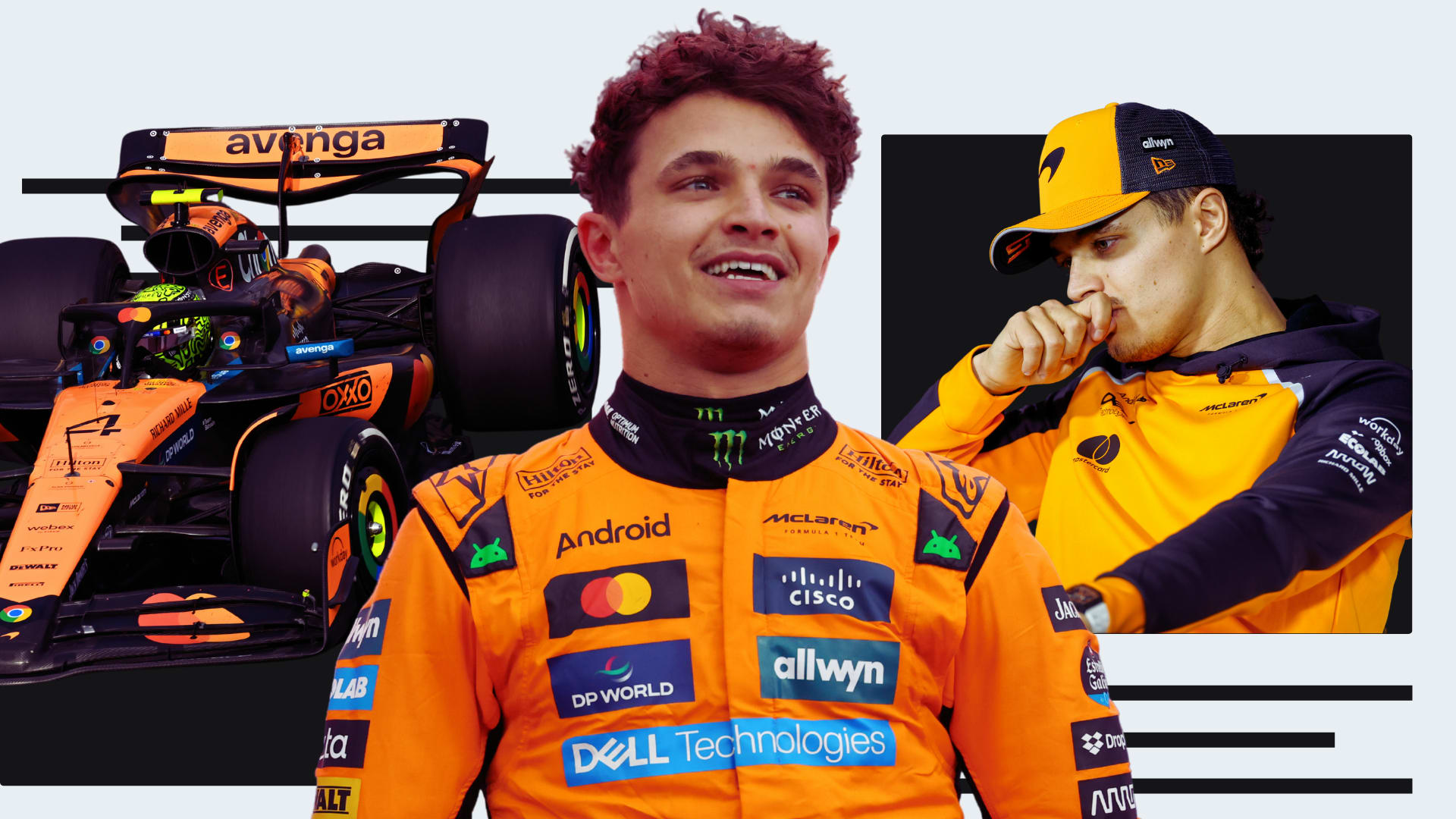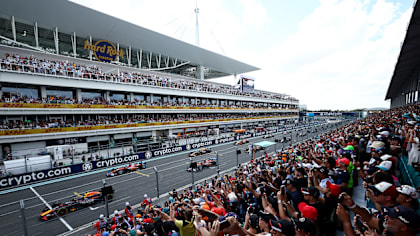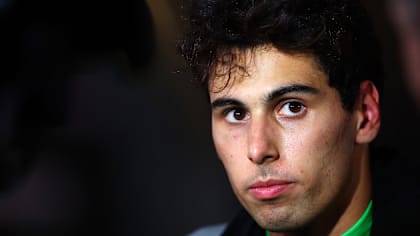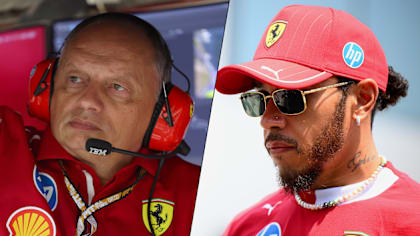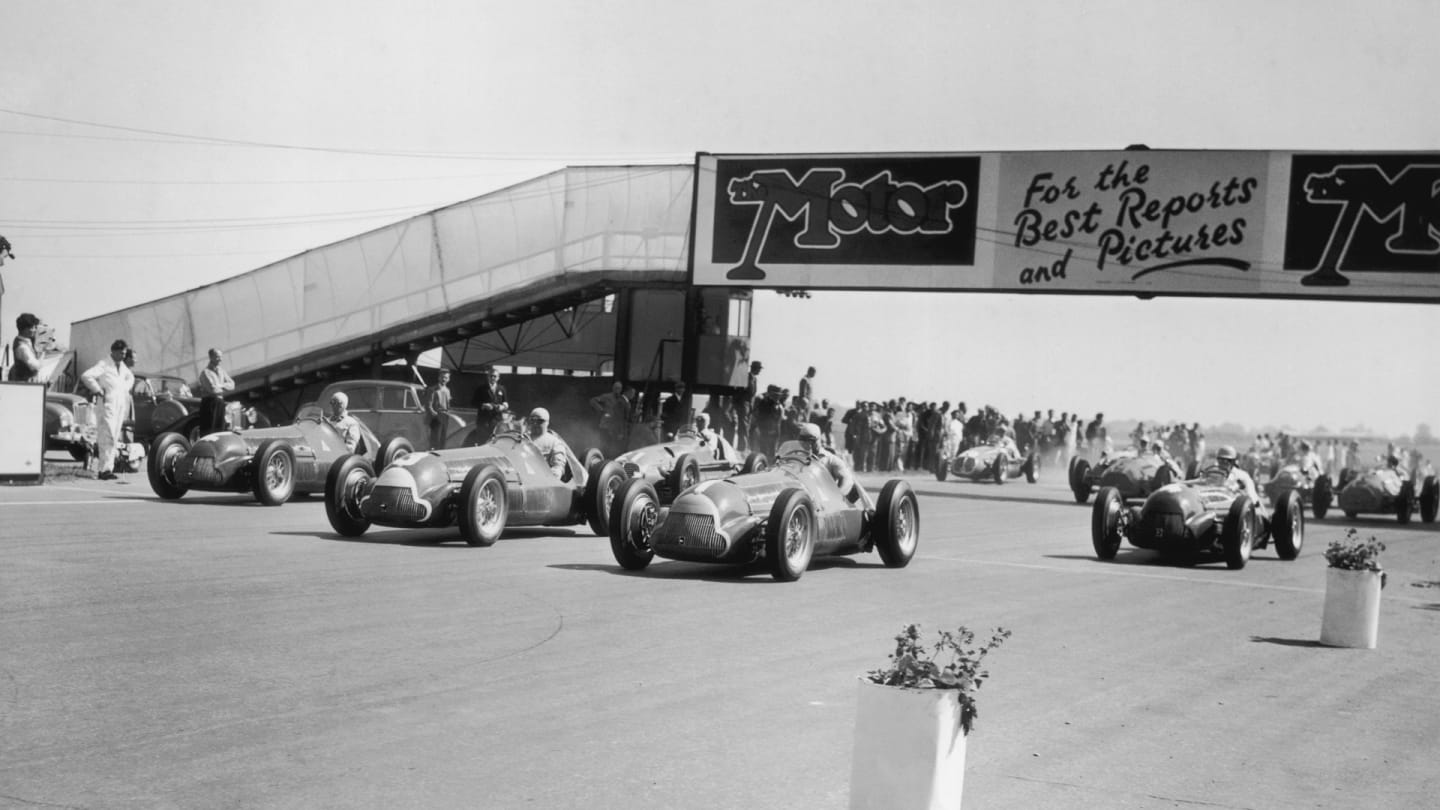
Feature
10 fascinating facts about the very first F1 Grand Prix, held on this day 70 years ago
Share

Did you know that the field for the first ever world championship F1 race included a Swiss baron, a Thai prince and a well-known Jazz musician? Exactly 70 years on to the day, we present a compendium of the most interesting, little-known and downright unusual facts about the historic Silverstone event…
1. The race had two different names
Believe it or not, the first world championship race had two titles. Officially it was the Grand Prix d’Europe - the first time that title had ever gone to a race outside Italy or France - but as the race was held on UK soil it incorporated the British Grand Prix.
Unlike today, when the season-opening event is traditionally scheduled for March, the race took place on May 13. Only six world championship season openers have been held later in the year. They were: 1951 (May 27), 1952 (May 18), 1961 (May 14), 1962 (May 20), 1963 (May 26) and 1966 (May 22).
READ MORE: 7 incredible season openers from each decade of F1
)
The pits were located between Abbey and Woodcote corners, in a temporary set-up
2. Woodcote was the first corner the drivers tackled
From 1952 until 2011 Woodcote was Silverstone’s final bend, but for the inaugural world championship event the sweeping right hander was the 4.6km circuit’s first corner - and thus the first corner tackled in the history of F1 racing.
From there the drivers would take on six other turns – Copse, Maggots, Becketts, Chapel, Stowe and Club – before arriving at the final corner, Abbey. The pit lane and starting grid were situated between Abbey and Woodcote, with the cars lining up for the start in 4-3-4 formation.
READ MORE: Why Silverstone still means so much to Formula 1
3. A very regal guest was in attendance
It was estimated that up to 120,000 spectators lined the track on race day, though by far the most important was His Royal Highness King George VI, who attended the race with Queen Elizabeth, Princess Margaret and guests Lord and Lady Mountbatten.
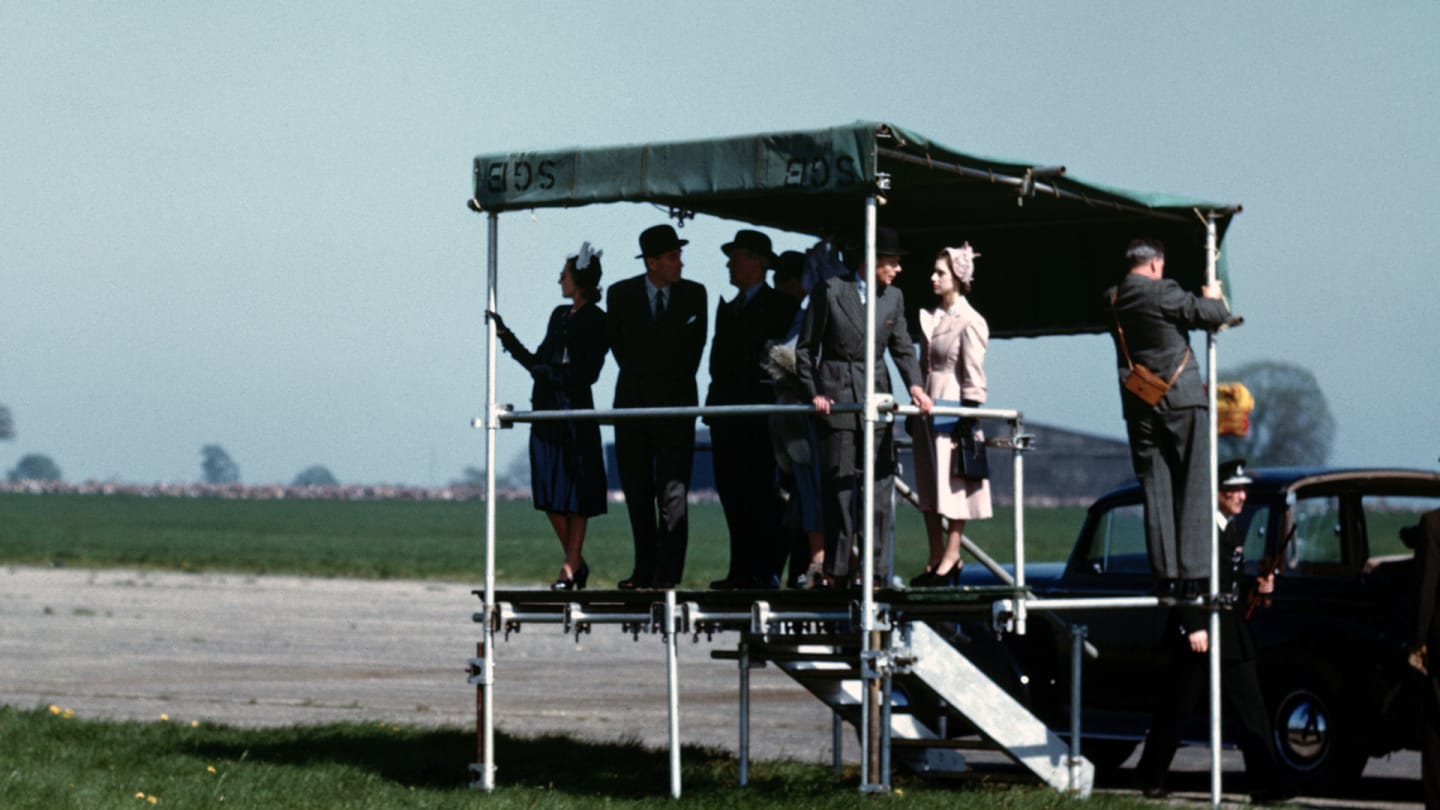
The British Royal Family watched the race from their 'royal box'. Princess Margaret is in the sunlight, right
4. A Thai prince and a Swiss baron took part
Rather fittingly for a race attended by royalty, the entry list had a distinctly aristocratic flavour. Among the 21 drivers that took the start were Prince Birabongse Bhanudej Bhanubandh (better known as Prince Bira or B. Bira), a notable racer and member of the Thai royal family, and Baron Emmanuel 'Toulo' de Graffenried, a Swiss driver who’d won the 1949 edition of the British Grand Prix in the pre-world championship era.
Bira, who was the only Thai driver to have competed in F1 until Alex Albon, qualified his Maserati fifth at Silverstone but retired in the race when he ran out of fuel. Similarly, de Graffenried failed to make the flag after his identical 4CLT-48 developed engine problems.
READ MORE: Who took the most F1 Grand Prix wins in each decade?
5. The 'Three Fs' were pre-race favourites
Alfa Romeo’s 158 may have been 13 years old by the time of the first world championship race, but the 1.5-litre supercharged machine was still the car to beat, and that helped the Italian manufacturer sign three of the era’s biggest names: Guiseppe ‘Nino’ Farina, Luigi Fagioli and Juan Manuel Fangio, affectionately known as the ‘Three Fs’.
The trio duly qualified their scarlet cars in the top three grid slots, with British driver Reg Parnell a second down the road in fourth in the final Alfa Romeo entry. In the race Farina, Fagioli and Fangio predictably ran away from the rest of the field, which was otherwise made up of a mixture of ageing Maserati’s, ERAs, Talbots and Altas.

The Alfa Romeos of Luigi Fagioli,'Nino' Farina, and Juan Manuel Fangio at Silverstone for the very first World Championship Grand Prix
After 70 laps and nearly two and a quarter hours of racing – during which the leading trio had traded places several times – it was Farina who triumphed, leading fellow Italian Fagioli across the line by 2.6s. But it was Parnell and not Fangio who completed Alfa’s clean sweep of the podium places after the Argentine had been forced into retirement with a broken oil pipe – possibly as a result of clipping a straw bale at Stowe.
6. The local wildlife got a little too close to the action
Despite their obvious speed advantage, Alfa Romeo were lucky to get three of their four cars to the finish after Parnell’s Alfetta came into contact with an unlucky member of Silverstone’s hare population. According to reports from the time, the animal caused a significant dent in the cowling of the British driver’s car.
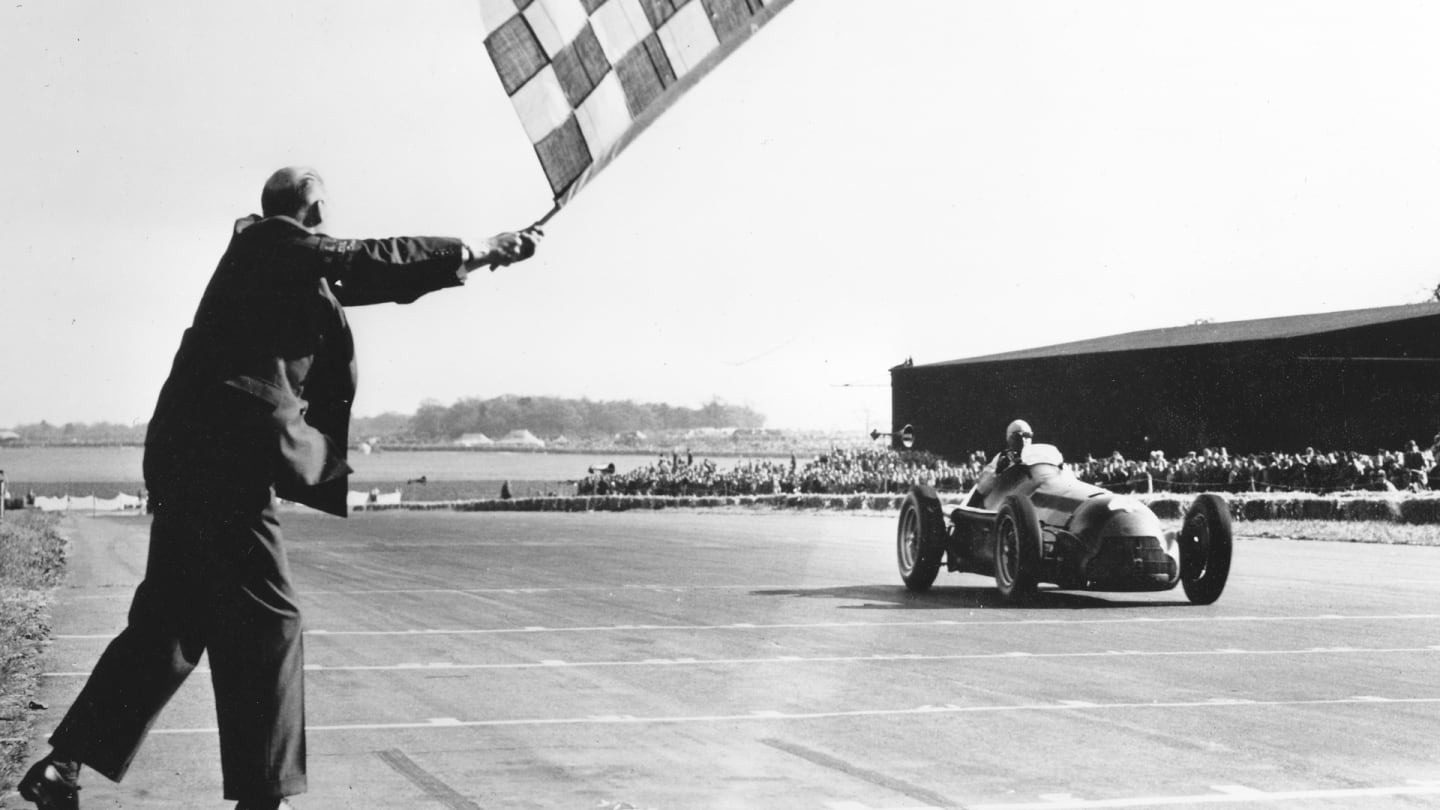
Fangio retired, leaving Farina the winner ahead of Fagioli, with Reg Parnell completing an Alfa Romeo 1-2-3
7. The average age of the field was 39
For the very first world championship race the average age was a mature 39 as three of the 21-driver field at Silverstone were in their fifties (pre-war aces Luigi Fagioli, 51, Louis Chiron, 50, and Philippe Etancelin, 53), while five more were forty or over, including race winner Giuseppe Farina (43).
The ‘baby’ of field, if you could call him that, was British racer Geoffrey Crossley, who, at 29, was just 12 years older than Max Verstappen was on his world championship debut…
READ MORE: Brazil 2019 trumps Monza 2008 for F1's youngest ever podium
8. A jazz musician finished in 11th place
No it’s not the set-up for a joke – a well-known jazz musician did indeed take part in the inaugural round of the world championship, though it’s fair to say that Johnny Claes enjoyed considerably more success with his splendidly named combo ‘Johnny Claes and the Clay Pigeons’ than he did in Formula 1 racing.
The Belgian driver (who was born in London) qualified his Talbot dead last at Silverstone, a full 18s back from Farina’s polesitting Alfa, but he did at least reach the chequered flag in the race, coming home six laps down on the Italian in 11th.
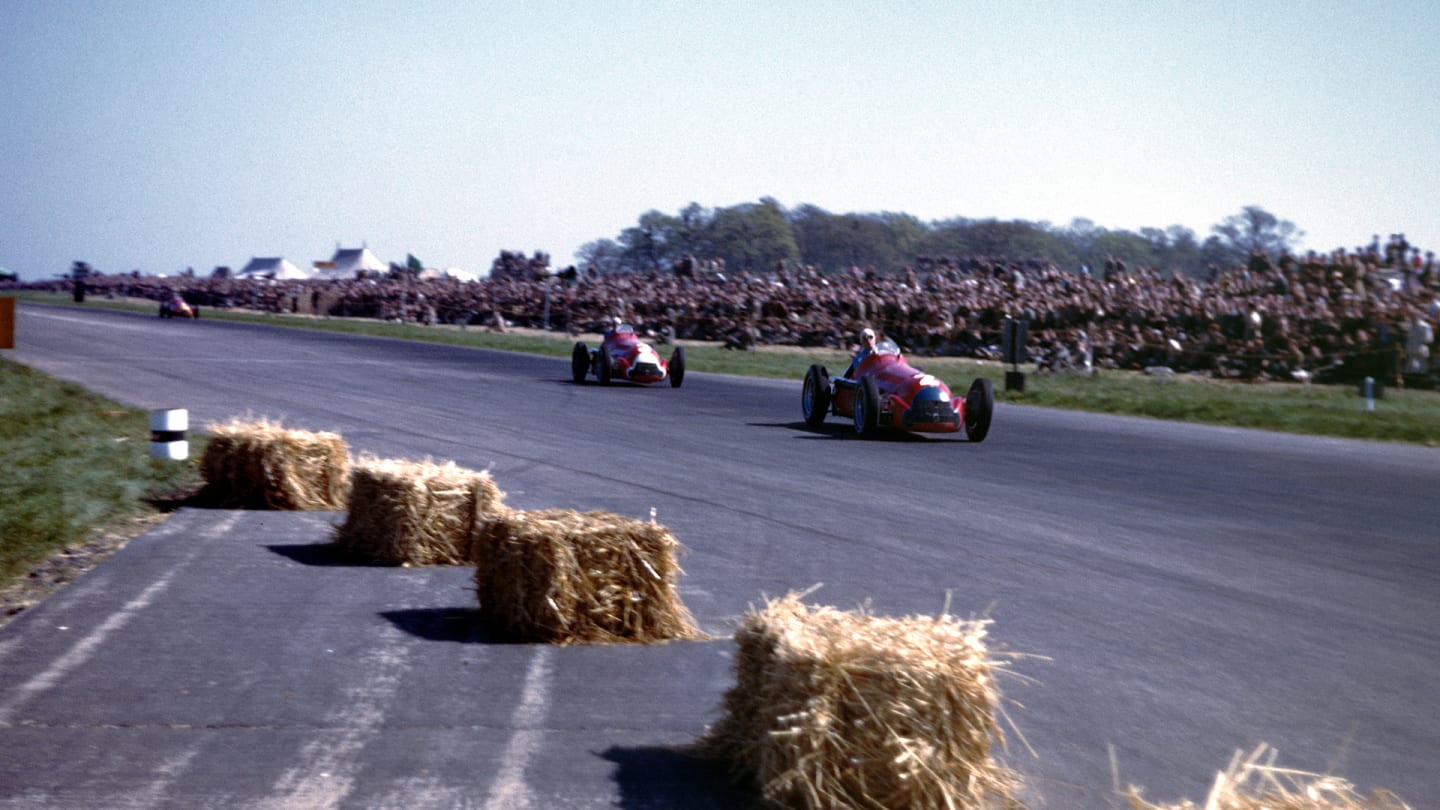
Farina leads Fagioli. There was little in the way of crash barrier but the straw bales could wreak havoc, as in Fangio's case
9. BRM debuted their fledgling F1 challenger before the race
Up-and-coming British constructor BRM had hoped to debut their V16 Type 15 at Silverstone, but after experiencing a litany of technical problems the pale green car was only able to complete a handful of pre-race demonstration laps with team founder Raymond Mays at the wheel. The car would eventually make its long-awaited world championship debut at the following year’s Silverstone round.
10. Stirling Moss came second in the support race
Stirling Moss would go on to win the British Grand Prix in both 1955 and 1957, but at the inaugural world championship Grand Prix in his homeland the then 20-year-old only appeared in the 500cc support races, not in the main event.
READ MORE: The king that was never crowned - Sir Stirling Moss remembered
Moss won his heat and was involved in a barnstorming battle for the lead in the final, but in the end had to settle for second place after his Cooper-JAP suffered a piston failure at the final corner. Still, at least he got to meet the King…
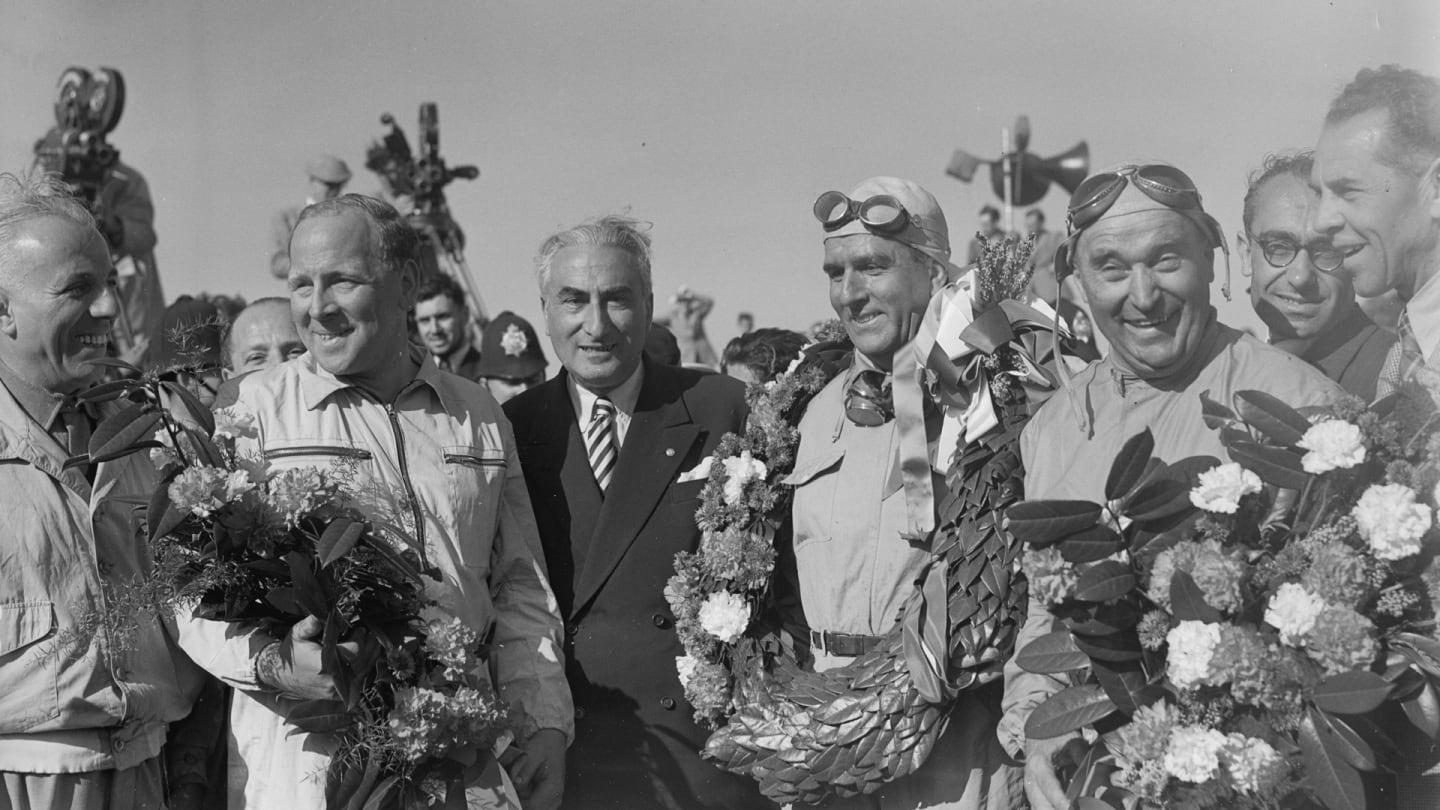
(L to R): Parnell, Farina and Fagioli celebrate victory on May 13, 1950
More on F1's 70th anniversary
- 10 fascinating facts about the very first F1 Grand Prix
- PODCAST: Listen to Martin Brundle discuss the best cars he's driven from every decade of F1
- Under the bodywork of the Alfa Romeo ‘Alfetta’ – 70 years after it won the first ever F1 race
- Why is it called Formula 1 – and 12 other questions about the championship’s origins
- 1950 vs 2020: Cars, drivers, safety and pitstops – how F1 has changed in 70 years
YOU MIGHT ALSO LIKE
FeatureF1 Unlocked THIS WEEK IN F1: 10 quiz questions on Miami Grand Prix trivia and the latest F1 news
NewsF1 Unlocked WIN Red Carpet Unlocked - F1 The Movie World Premiere
News ‘It's all about patience’ – Bortoleto admits transition from F2 title winner to F1 backmarker is ‘not easy’
News ‘I’m 2000% behind him’ – Vasseur backs Hamilton amid early Ferrari struggles as he insists ‘potential is there’
